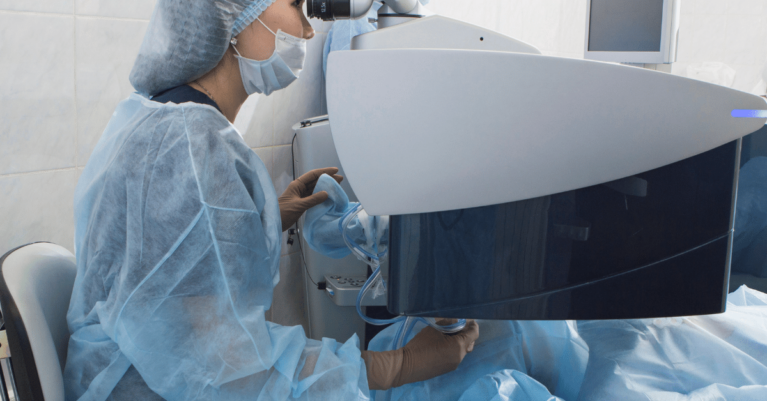
Contents
Squint surgery has a high success rate. However, just like any other surgery, there are some chances of squint surgery complications as well that are hard to avoid. Complications can occur however, their early diagnosis and treatment may optimize postoperative outcomes. Because of the complexity of the system, strabismus surgery can only solve a problem that is far more concerning than strabismus surgery may solve only a portion of a complex problem.
Squint also known as strabismus is a condition in which both eyes do not look at the same place at the same time. A simple term for squint is the misalignment of the eyes. It is commonly called “crossed eyes’’. It includes any type of misalignment, such as one eye pointing in, out, up, or down instead of in the same direction as the other eye. Squint happens when the muscles that control one of the eyes do not keep it properly lined up with the other. This condition can result in double vision.
Squint surgery corrects non-aligned vision. In this condition, one eye muscle does not work properly and turns inwards, upwards, downwards, or outwards while the other one focuses on one spot. It can happen all the time or on and off. To fix this defective vision, spectacles, eye exercises are recommended. But when nothing works, squint surgery can correct the condition and restores normal vision. And sometimes squint surgery complication occurs.
There are many squint surgery complications that can occur. These could be-
Not all surgeries can correct eye alignment completely. Sometimes, a muscle gets slipped, when the stitches holding the eyeball break or loosen up. Although this complication is rare and only occurs in 1 in 400 cases. It can happen during the surgery or in the first week after the operation. If it happens during the surgery the patient will probably feel it and they will be unable to move the eye in one particular direction.
Diplopia or double vision is when you see two images of the same thing. This is one of the common and undesirable squint surgery complications. This complication is left to settle by suppression especially in children and young adults. But if it still persists for more than a few days then it’s treatment is possible with prisms. And if even prisms fail to correct diplopia, reoperation to relieve the double vision.
This refers to the perforation of the outer coat of the eyeball with a surgical needle.
The incidence of these complications is usually in the region of 1-2 % of cases. In most cases, scleral perforation does not cause any serious harm other than a chorioretinal scar. However, it can trigger endophthalmitis, vitreous hemorrhage, or retinal detachment.
Squint surgery complications include the risk of infection after surgery. These infections usually occur in the first week after surgery, around the initial surgical incision into the conjunctiva. Infections can be mild or severe that require immediate attention like endophthalmitis.
A lost muscle occurs when the muscle slips free of the surgical treatments during surgery. Sutures capture only the superficial muscular capsule instead of securing the muscle belly. Usually, after the surgery, this slipped muscle can be retracted back within the muscle capsule.
The chances of this complication following squint surgery are very rare. The cause of endophthalmitis has not been identified but there are many risk factors involved. Scleral perforation is commonly responsible for increasing the risk of developing endophthalmitis after squint surgery. Endophthalmitis is hard to diagnose especially in children. Surgeons are careful while operating to prevent this complication and most often they are successful.
This complication is rare but it can affect the vision severely. A severe case of ischemia may include changes in pupil shape and reactivity, postoperative uveitis, cataract, keratopathy, and eventually loss of vision. This risk of anterior segment ischemia is higher when the surgery is being performed on multiple muscles in the same eye.
Since all squint surgery carries a risk of complications. The goal is to reduce the risk of post-surgery complications and know how to manage these complications. There are some ways you can achieve this goal. The management of post-operative complications of squint surgery directs towards preventing infections, relieving pain, and keeping monitoring eyes.
The best time to judge if the squint surgery has been successful is after 1 month of procedure. And the best thing you can do to avoid squint surgery complications is to stay in touch with your eye doctor. Keep informing about any changes you are feeling in your vision or eye.
Here at EyeMantra, we have an incredibly skilled team of health care professionals who will be happy to help you out. For any assistance regarding squint surgery and other related issues, you can reach out to us at +91-9711115191, check our website-@eyemantra.in